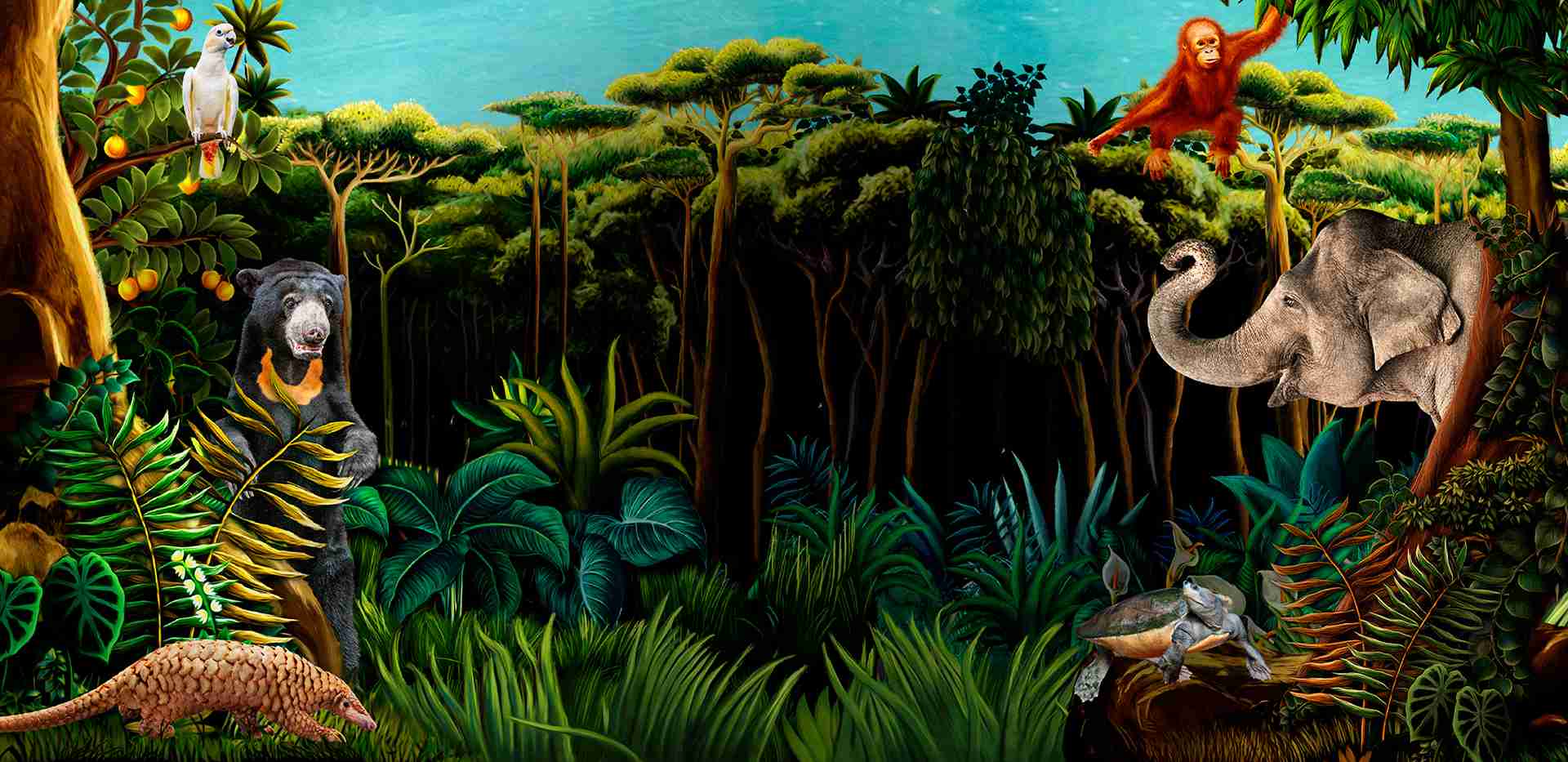Over 660 babies born and hatched in Singapore's wildlife parks in 2019
18 FEB 2020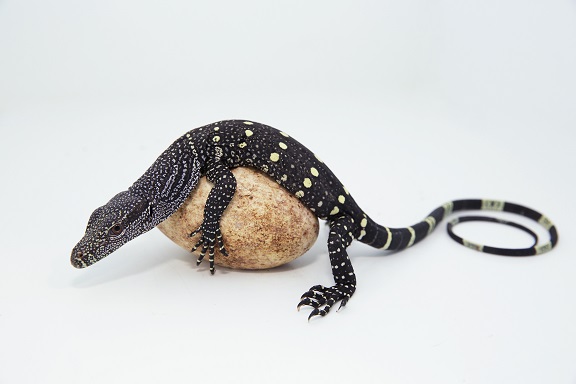
Singapore Zoo’s RepTopia saw its first two successful crocodile monitor hatchlings in November 2019, a significant milestone for the herpetology team as the species is known to be difficult to breed under human care.
PHOTO CREDITS: WILDLIFE RESERVES SINGAPORE
Jurong Bird Park
Endangered Santa Cruz ground doves from the Solomon Islands have been thriving under the care of the park’s avian team since 60 specimens were transferred to Jurong Bird Park as part of a species recovery plan. In December 2018, Jurong Bird Park became the first and only zoological institution to successfully breed the Santa Cruz ground dove under human care. Ever since then, the birds have been busy and by 2019, produced 37 successful hatchlings—a big win for the species which has a wild population that is estimated at only 300. The hatchlings are a boost to the world’s only assurance colony for this endangered species outside its native Solomon Islands. In partnership with the Solomon Islands Government, Toledo Zoo and Birdlife International, Jurong Bird Park ensures that a healthy population of the species remains under human care in case of an extinction event in the wild.
“As recent events like the fires in the Amazon and Australia have shown, wildlife is facing increasingly dire threats. Breeding these threatened species under human care helps to ensure that there is a sustainable population of the species, that could one day be used to supplement wild populations,” said Dr Luis Carlos Neves, WRS’ Director of Zoology.
Dr Neves serves as the species coordinator for the Santa Cruz ground dove Endangered European Species Programme (EEP) which strategises and oversees the conservation planning and management for the species.
“These zoo-born progenies are very valuable to the conservation of the species: they serve as ambassadors for their wild counterparts and help us tell their story. Also, they are an assurance population that can one day be used to strengthen the wild populations if they dwindle further or become locally extinct”
Jurong Bird Park also saw five successful hyacinth macaw hatchings in 2019. Native to South America, hyacinth macaws are listed as vulnerable and are threatened by habitat loss as well as poaching for the pet trade. To maximise their chances of survival, the chicks were hand raised at the park’s Breeding & Research Centre.
Night Safari
Night Safari saw its 31st Malayan tapir calf born on 25 July 2019. Named Sutera, which means silk in Malay, the calf’s signature watermelon-like dappled coat has since transitioned into the two-toned coat that is distinct in adult tapirs. Since 1991, a total of 14 tapirs from Night Safari and Singapore Zoo have been sent to other zoological institutions to boost populations under human care.
River Safari
River Safari welcomed a black, white and grey bundle-of-joy—the park’s fourth giant anteater pup which was born on 21 August 2019. Through public votes the pup was named Estrella which means star in Spanish. Estrella has an especially playful personality and likes to spend her time wrestling with her mother Iapura. Visitors can see them on the park’s Amazon River Quest boat ride.
River Safari’s aquarists had much to celebrate with three successful births of the park’s most iconic species, the West Indian manatee. WRS has an impressive track record with this vulnerable species, having bred 21 so far.
Singapore Zoo
Singapore’s Zoo’s herpetology team saw a milestone achievement with its first ever pair of crocodile monitor hatchlings at RepTopia. After two unsuccessful clutches from 9-year-old female Usa, Nature finally rewarded the unwavering team in November 2019 with two successful hatchlings from the third clutch of eggs. While breeding this species in captivity is already uncommon, these hatchlings are extra special in that both parents are themselves hatched under human care, which makes them the world’s first second generation crocodile monitors to hatch in a zoo. As solitary animals by nature, introducing the male and female for mating can be a delicate affair, requiring close supervision from keepers as the female tended to be aggressive towards her partner. Endemic to New Guinea, this arboreal lizard is threatened by deforestation and poaching in its home range.
Singapore Zoo also welcomed a pair of red-shanked douc langur babies in Primate Kingdom, bringing the park’s breeding record for the endangered species to 33. Native to Vietnam and Laos, these arboreal monkeys are known as “costumed apes” because of their extravagant coats which bear red, black, white, grey and gold highlights.
Singapore Zoo’s rhinoceros care team was treated to an early Christmas surprise with a white rhinoceros calf born on 19 December 2019. The 2-month-old was named Dalia, a Swahili name meaning gentle and tender. The park has had exceptional success with the endangered species, having bred 24 in total, of which 17 have been sent to other zoological institutions in Australia, India, Indonesia, Korea and Thailand where they have started their own families.
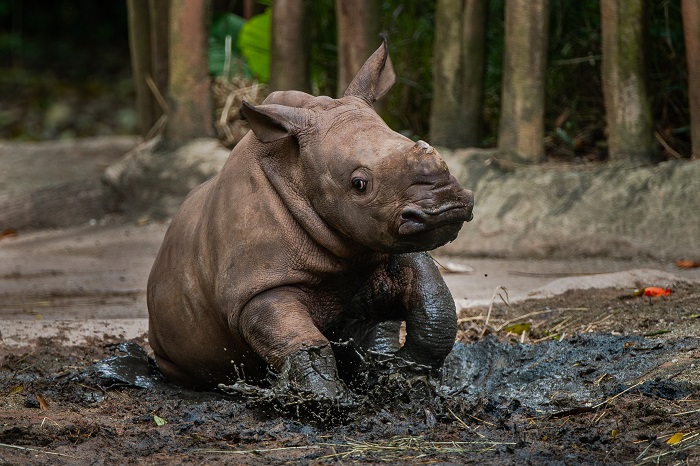
Singapore Zoo’s 24th rhinoceros calf has been namedDalia, after the Swahili word for gentle and tender. She enjoysgetting brushed by her caretakers and galloping around theexhibit at Wild Africa. Catch more of her antics on her veryown Instagram channel @daliathesgrhino.
PHOTO CREDITS: WILDLIFE RESERVES SINGAPORE
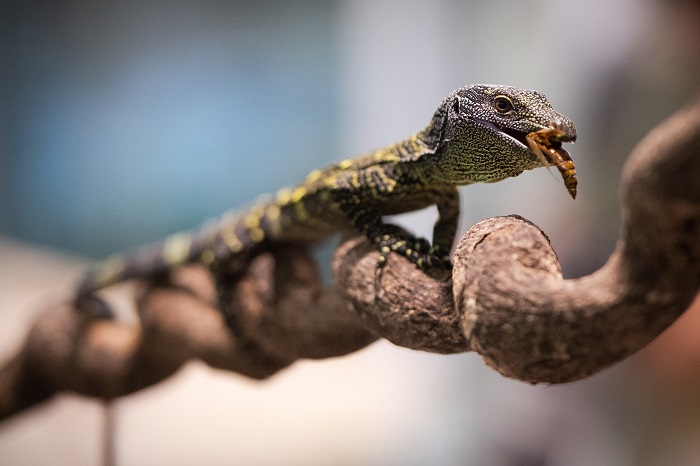
Singapore Zoo’s first two crocodile monitor hatchlings weregreeted with excitement by the park’s herpetology team. The young now reside in RepTopia’s behind-the-scenes facility.
PHOTO CREDITS: WILDLIFE RESERVES SINGAPORE

Singapore Zoo saw twosuccessful red-shanked douclangur births in PrimateKingdom, bringing the park’srecord of successful births for theendangered species up to 33.
PHOTO CREDITS: WILDLIFE RESERVES SINGAPORE
A pair of hyacinth macaws that were hand-raisedin Jurong Bird Park’s Breeding & Research Centre. The parkwelcomed five hatchlings of the vulnerable parrot in 2019.
PHOTO CREDITS: WILDLIFE RESERVES SINGAPORE
A Santa Cruz ground dove at Jurong BirdPark’s Breeding & Research Centre. The parkholds the only assurance colony for theendangered Santa Cruz ground-dove outside ofits native Solomon Islands. The colony has beenthriving, with an impressive 36 successfulhatchlings in 2019.
PHOTO CREDITS: WILDLIFE RESERVES SINGAPORE
Percy, one of a trio of three kingpenguin chicks that hatched in Jurong Bird Parkin 2019. Hand-raised in the avian nursery at thepark’s Breeding & Research Centre, the chickshave since grown and been introduced to therest of the colony in Penguin Coast.
PHOTO CREDITS: WILDLIFE RESERVES SINGAPORE
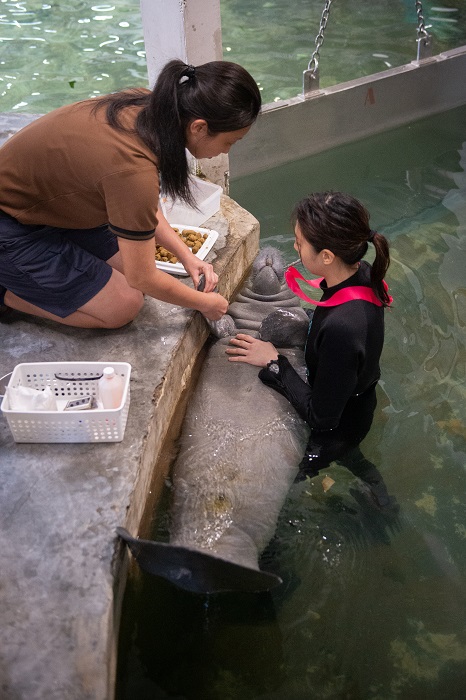
River Safari’s aquarists (from left)Joan Tan and Dona Loh conducting medicalconditioning on a manatee calf to get theanimal used to future medical proceduressuch as blood draw. River Safari saw threeWest Indian manatee calves born in 2019.
PHOTO CREDITS: WILDLIFE RESERVES SINGAPORE

Now at about seven months old, Suterahas transitioned into the adult two-toned coatand is old enough to venture out to the exhibitwith her mother. She is being conditioned tothe new surroundings, in preparation for herexhibit debut on Night Safari’s tram route.
PHOTO CREDITS: WILDLIFE RESERVES SINGAPORE

River Safari welcomed its fourth giantanteater pup on 17 July 2019, born to secondtimemother, Iapura. Visitors can catch a glimpseof them on the Amazon River Quest boat ride.
PHOTO CREDITS: WILDLIFE RESERVES SINGAPORE
